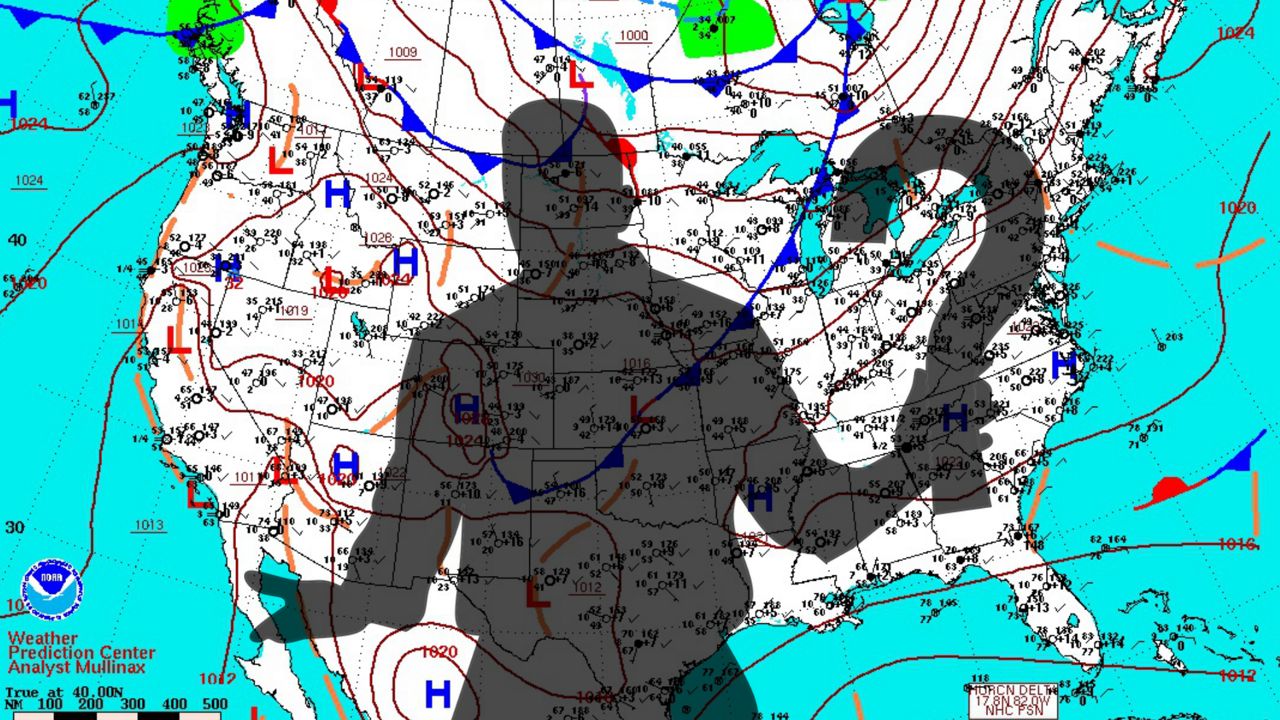Your local meteorologist is under a lot more pressure and stress than you might think. More often than not, they provide a solid forecast.
How many times has it happened? The forecast called for no rain, and it rained. Or, the meteorologist said we’re “looking at just an inch or two of snow,” then a half-foot of snow fell.
"It must be nice to be wrong all of the time and still get paid!"
That saying, however, may be more inaccurate than the forecast it's criticizing.
The truth is, meteorologists are a lot more accurate than given credit. Sometimes the accuracy of a forecast can come down to the perception of the forecast.
Let me explain.
In many cases, when the meteorologist is labeled “wrong,” it's because some mixup happened with precipitation. Either it rained when it wasn’t supposed to, or the amount of rain/snow was different than predicted.
Most days, people rarely complain if the temperature or wind forecast was off just a bit. But with rain and snow...those can ruffle some feathers.
We call this the “not in my backyard” viewpoint, as in "if it didn’t happen at my house, then it was wrong.”
Think of it this way: The forecast calls for a chance of rain today. It ended up staying dry at your house, but it rained at your mother’s house eight miles away.
Was the forecast wrong? Was it right? It's all about who got the rain and who did not.
A chance of rain tomorrow means just that: there is a chance. Some days the odds are higher than others; some days the odds are lower. Sometimes the odds are higher at one location and lower at another.
Take, for instance, a day with a "30 percent chance of rain."
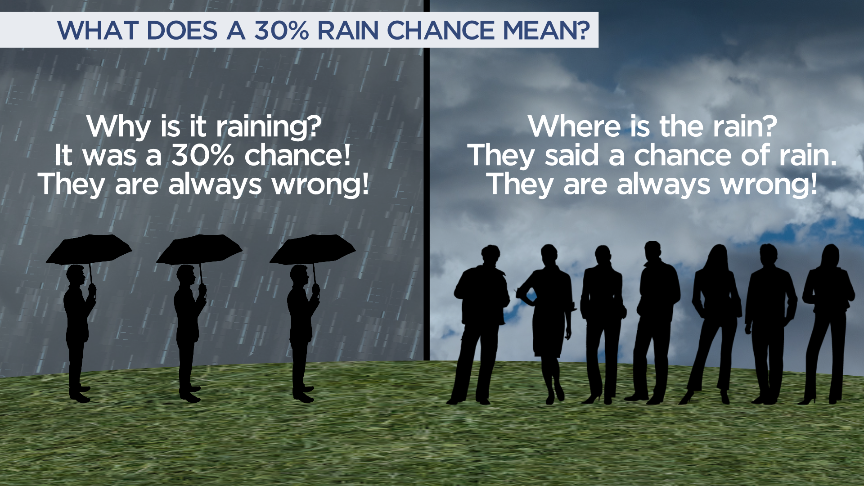
That's tough to explain on TV, let alone show in a simple TV 7-day graphic. But it's possible that a majority of the people stay dry and a small percentage see rain.
Even with all of the technology we have right now, it’s extremely difficult to accurately predict what exact neighborhoods will or will not get rain and/or snow.
Speaking of snow, how does a forecast of “just a couple inches of snow” turn into a huge snowstorm or vice-versa?
It’s easy to forget, but the atmosphere above our heads is a river of moisture. It’s always flowing, moving, and changing. One small change in a single variable can lead to large changes in the forecast 24-36 hours down the road.
If a storm changes track, even by 50-60 miles, that can be the difference from two inches of snow versus seven inches of snow.
On top of that, snow is an interesting beast. Just a small change in the moisture available in the atmosphere (say a tenth of an inch versus half of an inch) can be the difference between an inch of snow and five inches of snow.
To complicate matters even more, if the air temperature changes by just a couple of degrees, the water/snow ratio changes!
Here is an example: in general, one inch of rain equals about 10 inches of snow. But, only if the air temperature is at 32 degrees. If the air is a bit warmer, the snowfall will be less. Temperature a bit colder? More snowfall!
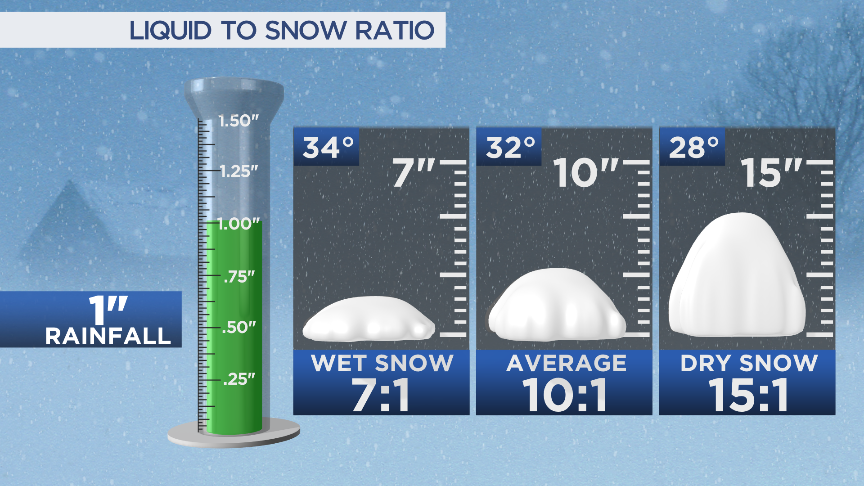
Once again, trying to nail down what area is going to get the precise amount of moisture (thus, snow) is beyond challenging.
Okay, but what about those high-tech computer model systems used to forecast the weather? Are they reliable?
And, it’s 2020; we have apps for everything. How come those always seem wrong too?
Apps and computer models are only as good as the data put into them. Long story short: to process all of the data needed to give a high-accuracy forecast (which could still turn out wrong), it would take longer than what we have time for.
In other words: if you want a perfect forecast for tomorrow, the results will not process until the day after, which is too late by that point.
Moreover, there are about three to five main computer forecast models (also called guidance) that meteorologists use to help forecast the weather. Some days the models all suggest the same result. On other days, each model has a different outcome.
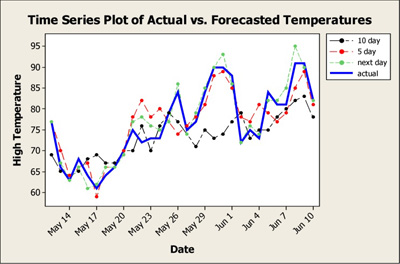
Plus, it’s not as easy as just picking a forecast model and running with it. Some models do better than others, but all have pitfalls and bad days. Also, one piece of “bad” data going into the model can ruin everything coming out of it.
Bottom line: models are guidance and nothing more than that. They are certainly not perfect.
Back to the subject at hand: meteorologists are always wrong, correct? Well, let’s do a quick comparison and put accuracy into perspective for a moment.
In baseball, the best batter in the 2020 season was DJ LeMahieu of the Yankees. His average: .364 (meaning he hit the ball 36 percent of the time he came up to bat).
In football - so far this season - Russell Wilson of the Seahawks has the best quarterback completion percentage: 75.2 percent. He completed about three out of four passes.
And in basketball, the best 3-point shooter this season missed more than half of his shots.
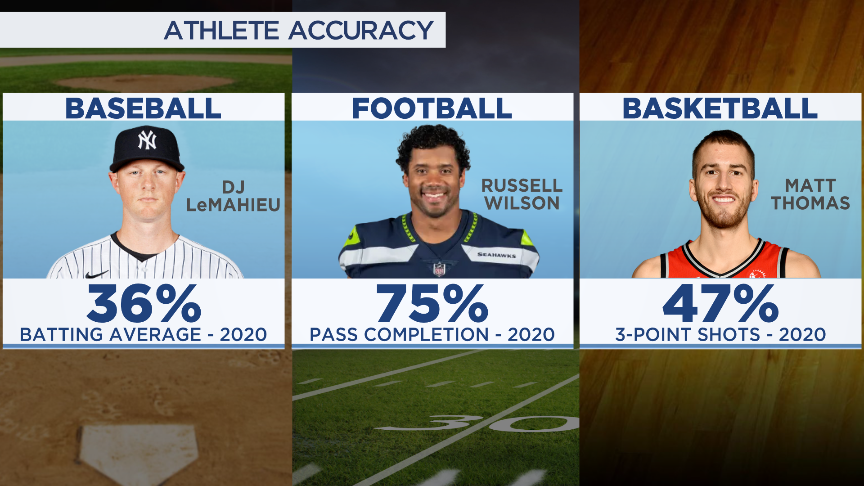
When it comes to weather, in general, the accuracy rate for a 24-hour forecast is about 95 percent. For a three-day forecast: about 86 percent. And for a five-day forecast: about 75 percent.
So, comparing that to baseball, football, and basketball, the accuracy of a meteorologist is much better!
Here is a perfect example of how predicting the future is never easy: when was the last time you nailed the entire NCAA March Madness bracket? How about just the Sweet 16?
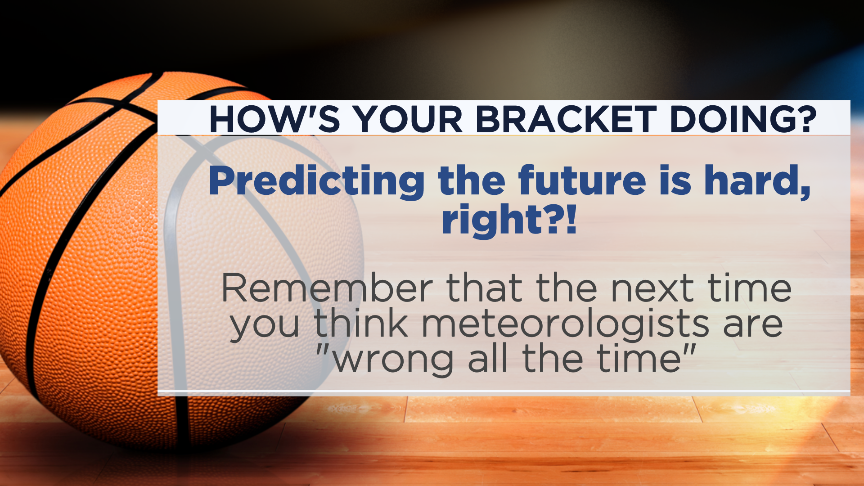
Think of the bracket as variables in the atmosphere. We know their "ranking", we know who should win, we know how they've "played" in the past.
But all it takes is one mistake; one miscue and a team that was supposed to win loses. It impacts the whole bracket. Now, everything down the line changes. Suddenly the final four is toast, and everyone scrambles to figure out what will happen next.
This is why forecasts are updated multiple times each day. The data is constantly changing. Sometimes a forecast can stand up two or three days out. Other times, it can turn on a dime in the last six hours.
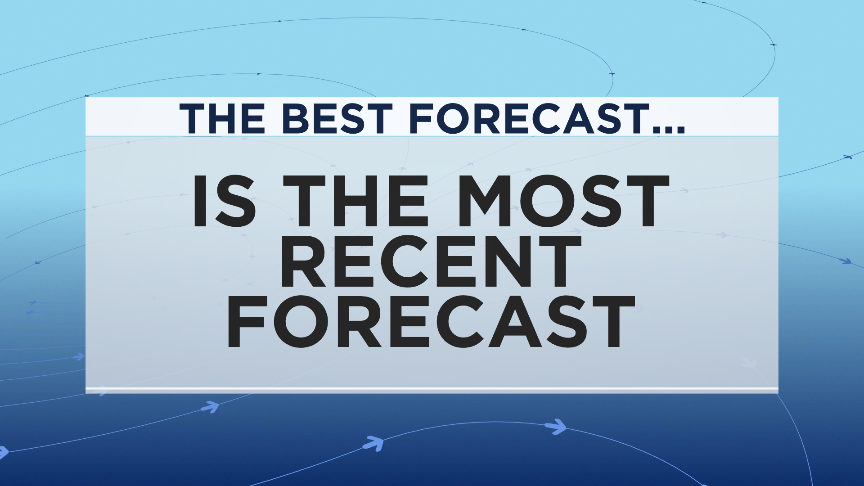
At the end of the day, meteorologists are using a blend of science, art, and experience to predict the future. More often than not, they are getting it right.
Moreover, they are predicting the future for a small point on a giant rock 25 thousand miles wide, whirling around the sun, and spinning on its axis at 1,000 mph! That makes things complicated.
While there are no perfect forecasts or perfect meteorologists, the accuracy rate is a lot higher than many people are willing to admit. So the next time you think about saying "it must be nice to be wrong all of the time and still get paid," remember that the forecast may have been correct for someone else.



